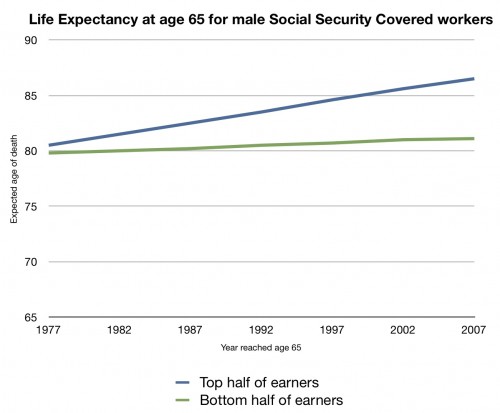Marginal Revolution: What should we do instead of the Obama health reform bill?:
"1. Construct a path for federalizing Medicaid and put it on a sounder
financial footing; call that the 'second stimulus' while you're at it.
It's better and more incentive-compatible than bailing out state
governments directly and the program never should have been done at the
state level in the first place.
2. Take some of the
money spent on subsidizing the mandate and put it in Medicaid, to
produce a greater net increase in Medicaid than the current bill will
do, while still saving money on net. Do you people like the idea of a
public plan? We already have one!
2b. Make any 'Medicare to Medicaid' $$ trade-offs you can, while recognizing this may end up being zero for political reasons.
3.
Boost subsidies to medical R&D by more than the Obama plan will
do. Establish lucrative prizes for major breakthroughs and if need be
consider patent auctions to liberate beneficial ideas from P >
MC.
4. Make an all-out attempt to limit deaths by
hospital infection and the simple failure of doctors to wash their hands
and perform other medically obvious procedures.
5.
Make an all-out attempt, working with state and local governments
(recall, since the Feds are picking up the Medicaid tab they have
temporary leverage here), to ease the spread of low-cost, walk-in health
care clinics, run on a WalMart sort of basis. Stepping into the realm
of the less feasible, weaken medical licensing and greatly expand the
roles of nurses, paramedics, and pharmacists.
6. Make
an all-out attempt, comparable to the moon landing effort if need be, to
introduce price transparency for medical services. This can be done.
7.
Preserve current HSAs. The Obama plan will tank them, yet HSAs, while
sometimes overrated, do boost spending discipline. They also keep open
some path of getting to the Singapore system in the future.
8.
Invest more in pandemic preparation. By now it should be obvious how
critical this is. It's fine to say 'Obama is already working on this
issue' but the fiscal constraint apparently binds and at the margin this
should get more attention than jerry rigging all the subsidies and
mandates and the like.
9. Establish the principle that future extensions of coverage, as done through government, will be for catastrophic care only.
10.
Enforce current laws against fraudulent rescission. If these cases are
so clear cut and so obviously in the wrong, let's act on it. We can
strengthen the legal penalties if need be.
11. Realize
that you cannot tack 'universal coverage' (which by the way it isn't)
onto the current sprawling mess of a system, so look for all other means
of saving lives in other, more cost-effective ways. If you wish, as a
kind of default position, opt for universal coverage if the elderly
agree to give up Medicare, moving us to a version of the Swiss system
and a truly unified method of coverage. But don't bet on that ever
happening.
Separate issues:
12. If you
can tax health insurance benefits and cut a Pareto-improving deal
overall, fine, but I am considering this to be too politically utopian
and it's not clear what the rest of that deal looks like. The original
tax break makes no economic sense but you don't want to end up with a
big tax increase and a lot more people on the public books with little
in return.
13. If the current bill were voted down, you
can imagine some version of the above happening, although not
necessarily all at once in one big bill.
14. Commission
a study of how much the Obama plan is spending per QALY saved. I agree
that more health insurance saves lives, but a) the study should adjust
appropriately for the superior demographics of those who hold or buy
insurance, and b) the study should adjust for the income that would be
lost through mandates and the safety that income would purchase. I
worry greatly that we have never, ever seen this number presented and
that if we did it would not be pretty. In any case, do the study,
scream the number from the rooftops, and reread points 1-11. Enact.
That's
my recipe. It's better than what we are doing now. You don't have to
adhere to any extreme form of economistic or free market ideology to buy
it. It might even be politically easier than the current path, as it
'sounds less socialistic.'"


